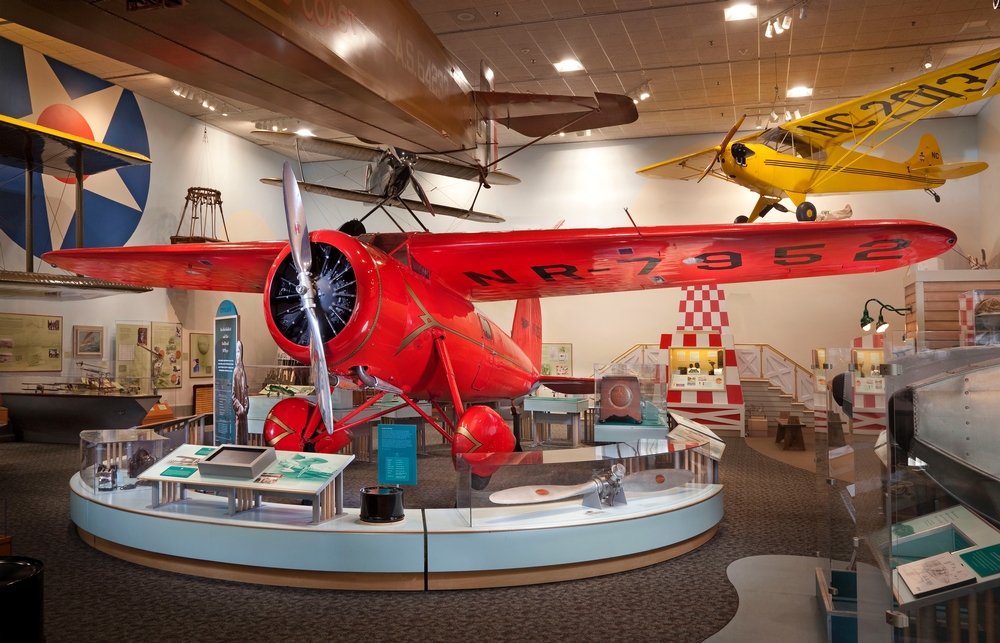Wingspan: 12.5 m (41 ft)
Length: 8.4 m (27 ft 6 in)
Height: 2.5 m (8 ft 2 in)
Weight, empty: 1,199 kg (2,634 lb)
Weight, gross: 2,495 kg (5,500 lb)
Top speed: 298 km/h (185 mph)
Engine: Pratt & Whitney Wasp CB, #3812, 500 hp
Manufacturer: Lockheed Aircraft Corp., Burbank, Calif., 1928
Take a look at the Vega’s wheels. Do you see the covers over them? They may look like fancy red shoes, but they’re called wheel pants. They help reduce drag and allow the plane to fly faster. Other elements that helped reduce drag on this plane were the single-wing design, the lack of struts, and the engine cowling.









